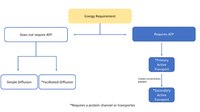
Photo from wikipedia
Preeclampsia is a blood pressure disorder associated with significant proteinuria. Hypertensive women have increased levels of neurokinin B (NKB) and Cu(II) ions in blood plasma during pregnancy. NKB bears the… Click to show full abstract
Preeclampsia is a blood pressure disorder associated with significant proteinuria. Hypertensive women have increased levels of neurokinin B (NKB) and Cu(II) ions in blood plasma during pregnancy. NKB bears the ATCUN/NTS N-terminal motif empowering strong Cu(II) binding in a characteristic four-nitrogen (4N) square-planar motif, but an alternative Cu(II)NKB2 geometry was proposed earlier. We studied the coordination of DMHD-NH2, representing the NKB ATCUN/NTS motif, to Cu(II) by potentiometry, electronic absorption and circular dichroism spectroscopy in water and SDS micellar solutions. NKB was studied in SDS micelles. The experiments were aided by density functional theory (DFT) calculations. We found that under all investigated conditions NKB formed solely 1 : 1 complexes. In the absence of SDS, the 4N complex at physiological pH 7.4 has a very low dissociation constant of 3.5 fM, but the interaction with SDS weakened the binding nearly thousand-fold. This interaction may serve as a molecular switch for specific Cu(II) delivery to membrane receptors by NKB. Furthermore, the calculations based on clinical data indicate a potential toxic role of Cu(II)NKB in preeclampsia.
Journal Title: Dalton transactions
Year Published: 2022
Link to full text (if available)
Share on Social Media: Sign Up to like & get
recommendations!